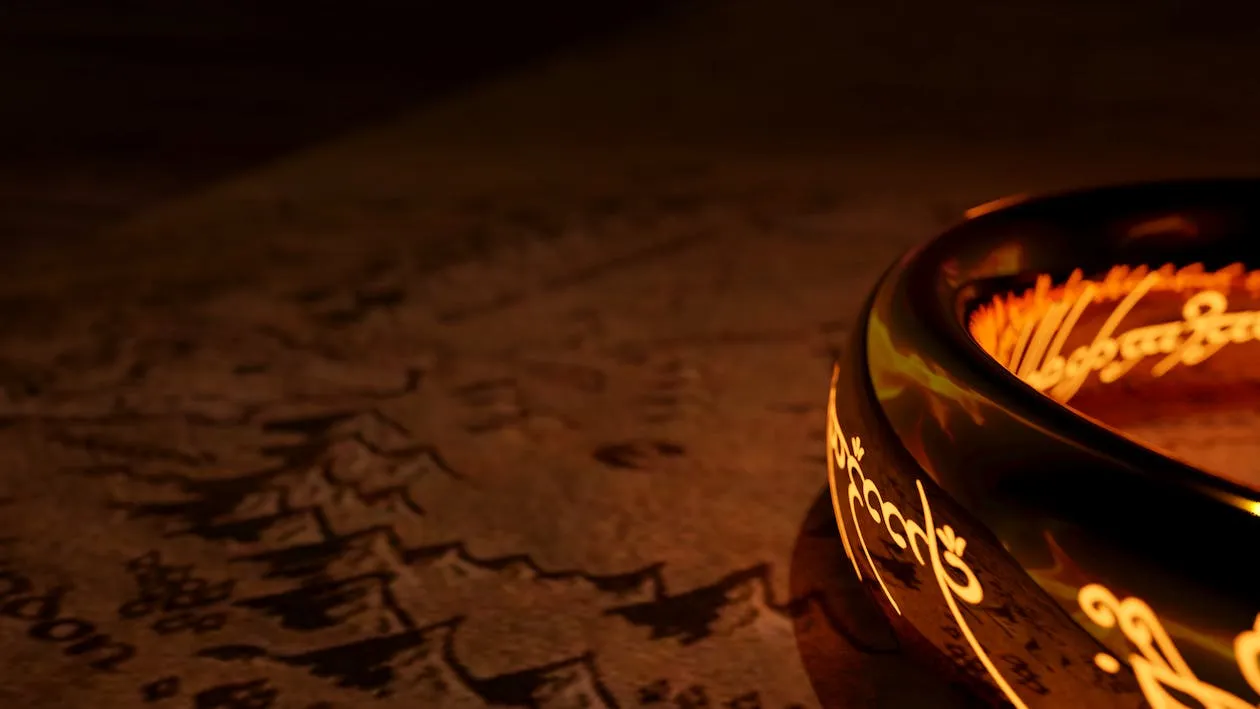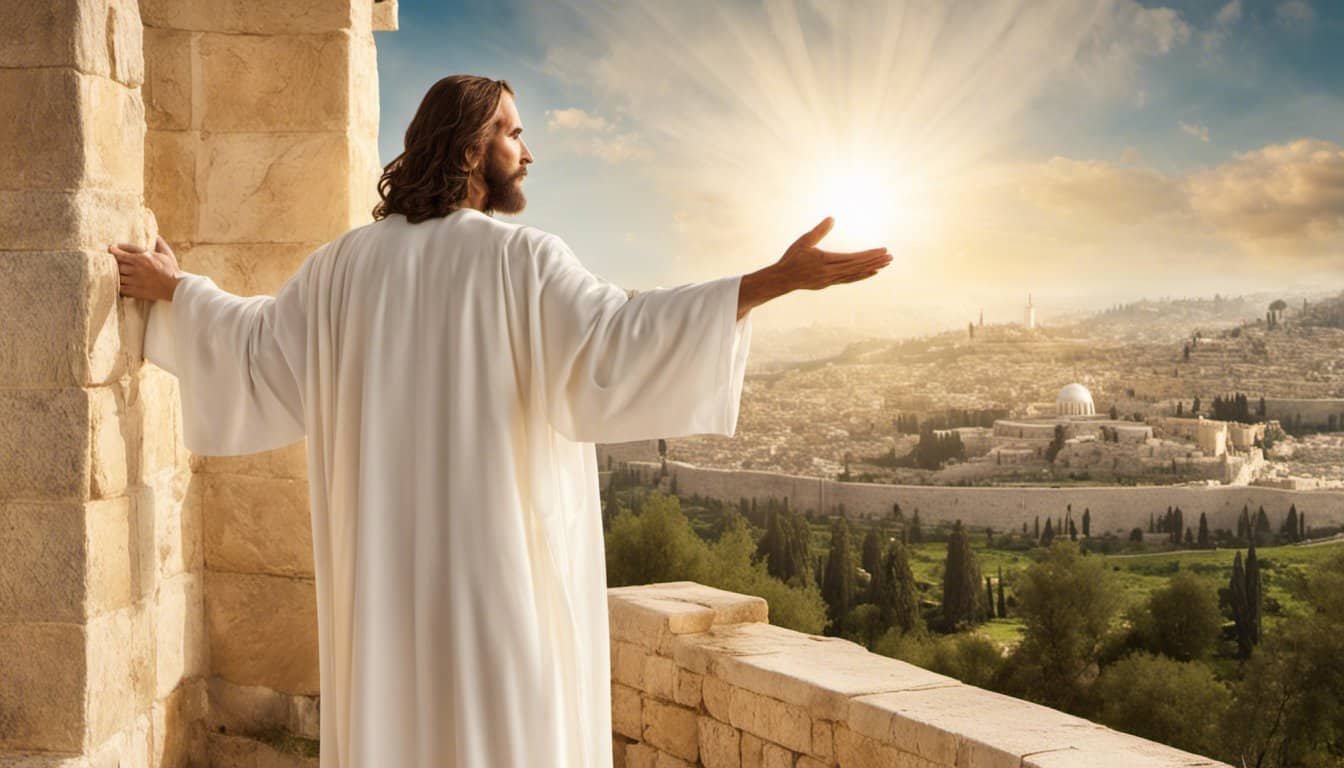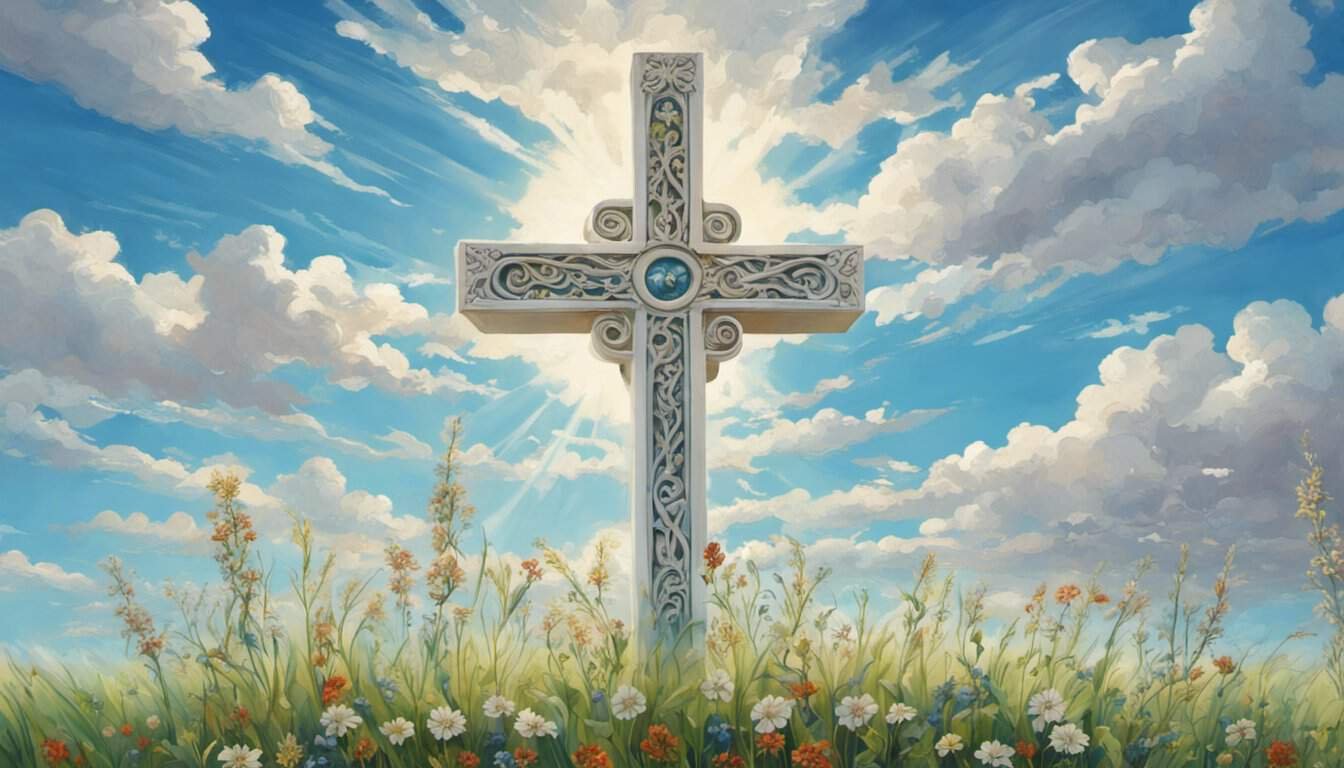The Lord of the Rings is a classic trilogy of high fantasy novels written by J.R.R. Tolkien. The books have been widely celebrated for their intricate world-building, compelling characters, and epic storylines. However, one question that has been asked by many readers is whether or not The Lord of the Rings is a Christian work. Given Tolkien’s personal beliefs and the presence of Christian themes throughout the trilogy, there is certainly a case to be made.

Tolkien was a devout Catholic and his faith played a significant role in his life and work. As such, it is not surprising that Christian themes are present in The Lord of the Rings. However, the extent to which the books can be considered explicitly Christian is a matter of debate. Some readers argue that the books are primarily works of fantasy and that any Christian themes present are incidental. Others contend that the books are deeply infused with Christian ideas and that they can be read as allegories for the Christian faith.
Tolkien’s Personal Beliefs

J.R.R. Tolkien’s personal beliefs played a significant role in his literary works, including “The Lord of the Rings.” As a devout Roman Catholic, Tolkien’s faith is often reflected in his works, although he never intended for his writings to be seen as Christian allegories.
Catholic Influence on Tolkien
Tolkien’s Catholic faith had a significant impact on his writing. He was a member of the Roman Catholic Church, and his faith was an integral part of his life. In an interview with Clyde S. Kilby, Tolkien stated that his work was “fundamentally religious and Catholic” and that he had “always been inspired by the Catholic faith.”
Many of the themes and motifs in “The Lord of the Rings” can be traced back to Catholicism. For example, the concept of evil is represented by Sauron, who seeks to dominate and enslave all of Middle-earth. The idea of temptation is also present in the story, as characters such as Boromir and Saruman are corrupted by the lure of power.
Tolkien’s Religious Perspectives
Tolkien’s religious perspectives were not limited to Catholicism. He also had an interest in Norse mythology and Anglo-Saxon literature, which influenced his works. Some scholars have suggested that Tolkien’s views on religion were more complex than just Catholicism, and that he drew inspiration from a variety of sources.
Despite this, it is clear that Tolkien’s faith played a significant role in his life and his writing. His works are often seen as a reflection of his Catholic beliefs, although he never intended for them to be read as Christian allegories. Instead, his stories are meant to be enjoyed for their own sake, with readers free to interpret them in their own way.
In conclusion, while “The Lord of the Rings” is not a Christian allegory, it is undeniably influenced by Tolkien’s personal beliefs. His Catholic faith is reflected in the themes and motifs of the story, and his interest in mythology and literature adds depth and complexity to his works.
Themes of Christianity in Middle-Earth
https://www.youtube.com/watch?v=sV9R5Z02GtE&embed=true
J.R.R. Tolkien’s Middle-Earth is a world filled with Christian themes and symbolism. In this section, we will explore some of the most prominent Christian themes in Middle-Earth, including Good Versus Evil, Sacrifice and Redemption, Resurrection and Hope.
Good Versus Evil
One of the most prominent themes in Middle-Earth is the battle between Good and Evil. The forces of Good are represented by characters such as Gandalf, Frodo, and Aragorn, while the forces of Evil are represented by characters such as Sauron, Saruman, and the Nazgul. This battle between Good and Evil is a central theme in Christianity, with the forces of Good triumphing over the forces of Evil in the end.
Sacrifice and Redemption

Another important theme in Middle-Earth is Sacrifice and Redemption. Characters such as Frodo and Sam make great sacrifices in order to destroy the Ring, while Aragorn sacrifices his own life to save his people. These acts of sacrifice are reminiscent of the ultimate sacrifice made by Jesus Christ on the cross, and they serve as a reminder that redemption is possible even in the darkest of times.
Resurrection and Hope
Finally, Middle-Earth is filled with themes of Resurrection and Hope. Gandalf, one of the most beloved characters in the series, dies and is resurrected, serving as a symbol of hope for the rest of the characters. Similarly, the destruction of the Ring represents a new beginning for Middle-Earth, a world that is now free from the tyranny of Evil. These themes of Resurrection and Hope are central to Christianity, reminding us that even in the darkest of times, there is always hope for a better future.
In conclusion, J.R.R. Tolkien’s Middle-Earth is filled with Christian themes and symbolism, including Good Versus Evil, Sacrifice and Redemption, and Resurrection and Hope. These themes serve as a reminder that even in the darkest of times, there is always hope for a better future, and that redemption is possible through acts of sacrifice and selflessness.
Characters as Christian Symbols
https://www.youtube.com/watch?v=95QnO-6rt3w&embed=true
The characters in “Lord of the Rings” are often viewed as Christian symbols. Here are a few examples:
Gandalf’s Christ-like Attributes
Gandalf, the wizard, is one of the most prominent Christ figures in the story. He is often referred to as the “gray pilgrim” and travels extensively, seeking to help others, restore hope, and fight evil. Like Jesus, he possesses several different names that each have a unique meaning. In addition, he is a wise and compassionate leader who is willing to sacrifice himself for the greater good.
Frodo and the Burden of Sin
« Is Fish a Christian Symbol? Exploring the Religious Significance of Fish in Christianity
Is Lent a Christian Practice? »
Frodo, the hobbit, can be seen as a symbol for humanity burdened by sin. He is tasked with carrying the Ring of Power, which represents the weight of human sin, to its destruction. Throughout his journey, he is tempted by the Ring’s power and struggles with the burden of his task. In the end, he is able to resist the temptation and complete his mission, which can be seen as a representation of atonement.
Aragorn’s Kingly Qualities
Aragorn, the rightful king of Gondor, can be seen as a symbol for Christ as king. He is a wise and just leader who is willing to sacrifice himself for his people. He is also a skilled warrior who is able to defeat evil and restore peace to the land. His eventual ascension to the throne can be seen as a representation of Christ’s ultimate victory over sin and death.
Overall, the characters in “Lord of the Rings” can be interpreted as Christian symbols, representing various aspects of the Christian faith such as sacrifice, atonement, sin, and redemption.
The Role of Providence and Fate
https://www.youtube.com/watch?v=gJTqUH9vi3Q&embed=true

J.R.R. Tolkien was a devout Catholic, and his Christian beliefs influenced his writing, including “The Lord of the Rings.” One of the major themes in the book is the role of providence and fate.
Divine Providence in the Quest
Throughout the quest to destroy the One Ring, the characters encounter many challenges and obstacles. However, they are often aided by what can be seen as divine providence. For example, Frodo and Sam are guided by Gollum, who is driven by his own desire to possess the Ring. Without Gollum’s intervention, Frodo and Sam may not have been able to reach Mount Doom and destroy the Ring.
Furthermore, the characters’ actions often have unintended consequences that lead to a greater good. For instance, Boromir’s attempt to take the Ring from Frodo ultimately leads to his redemption and sacrifice.
Characters’ Encounters with Destiny
The characters in “The Lord of the Rings” also frequently encounter their own destiny. Frodo, in particular, is chosen by fate to carry the Ring and complete the quest. However, the characters’ free will and choices also play a role in their destiny. For instance, Aragorn chooses to accept his destiny as the rightful king of Gondor, while Saruman chooses to betray his allies and side with Sauron.
The concept of prophecy also plays a role in the characters’ encounters with destiny. For example, the prophecy that a hobbit will destroy the Ring is fulfilled by Frodo, and the prophecy that Aragorn will become king is also fulfilled.

Overall, the role of providence and fate in “The Lord of the Rings” reflects Tolkien’s Christian beliefs in divine intervention and destiny.
Allegorical Interpretations
https://www.youtube.com/watch?v=4EY78ySSAO8&embed=true
Allegory or Applicability
There is a long-standing debate among literary critics and fans about whether or not J.R.R. Tolkien’s “The Lord of the Rings” is a Christian allegory. Tolkien himself rejected the idea that his work was an allegory, stating that he disliked allegory in all forms and preferred to use what he called “applicability.” Applicability, according to Tolkien, is the ability of a story to resonate with readers on a deeper level, without being a direct allegory for any specific religious or political belief.
However, many readers have found Christian themes and symbols throughout the books. For example, the character of Gandalf has been compared to a Christ figure, sacrificing himself for the greater good and later being resurrected. The One Ring has been compared to original sin, and the journey to destroy it has been likened to a spiritual pilgrimage.
Comparisons to Biblical Events
Some readers have also pointed out similarities between events in the books and events in the Bible. For example, the story of Samwise Gamgee carrying Frodo up Mount Doom has been compared to the story of Simon of Cyrene carrying the cross for Jesus. The character of Aragorn has been compared to King David from the Bible, and the battle of Helm’s Deep has been compared to the battle of Jericho.

Despite these comparisons, Tolkien maintained that his work was not intended to be a direct allegory for any specific religious belief. Instead, he saw it as a way to explore universal themes and human experiences that could resonate with readers of all backgrounds.
Theological Concepts in the Trilogy
https://www.youtube.com/watch?v=ELi_80z0fwI&embed=true
Salvation and Grace
The concept of salvation and grace is central to Christian theology. The Lord of the Rings trilogy portrays this concept through the character of Frodo, who is chosen to carry the Ring of Power to Mount Doom to destroy it. Frodo’s mission is a metaphor for salvation, as he is the only one who can save Middle-earth from the darkness that threatens to engulf it.
Frodo’s journey is also a representation of the Christian doctrine of grace, which is the belief that salvation is a free gift from God that cannot be earned. Similarly, Frodo’s success in destroying the Ring is not due to his own strength or abilities, but rather the grace of a higher power. This is demonstrated when Frodo is unable to destroy the Ring himself and is ultimately saved by the intervention of Gollum.
Temptation and Spiritual Warfare
The concept of temptation and spiritual warfare is another important theme in Christian theology that is present in The Lord of the Rings trilogy. The Ring of Power is a symbol of temptation, as it has the power to corrupt even the strongest of wills.

The character of Boromir is an example of this, as he is initially tempted by the Ring and tries to take it from Frodo. Boromir’s eventual redemption and sacrifice for the greater good is a representation of the Christian concept of spiritual warfare, which is the struggle between good and evil forces in the spiritual realm.
The character of Gandalf also represents the idea of spiritual warfare, as he is a wise and powerful wizard who is able to resist the corrupting influence of the Ring. Gandalf’s role in the story is to guide and protect the Fellowship of the Ring, and his ultimate sacrifice in the battle against the Balrog is a representation of the Christian concept of self-sacrifice for the greater good.
In conclusion, The Lord of the Rings trilogy contains many theological concepts that are central to Christian theology, such as salvation, grace, temptation, and spiritual warfare. These concepts are portrayed through the characters and their struggles, and serve to reinforce the Christian themes of sacrifice, redemption, and the ultimate triumph of good over evil.
Moral and Ethical Lessons
https://www.youtube.com/watch?v=TeF6lomaU3I&embed=true
The Lord of the Rings is not only a thrilling adventure story but also a rich source of moral and ethical lessons. The following are some of the most prominent themes related to morality and ethics that can be found in the story.
The Value of Mercy and Pity

One of the most significant themes in The Lord of the Rings is the value of mercy and pity. The story repeatedly demonstrates that showing mercy and pity to one’s enemies can have a profound impact on the outcome of events. For example, Frodo shows mercy to Gollum, a treacherous creature who seeks to steal the Ring from him. In the end, it is Gollum’s mercy that saves Frodo’s life and enables him to destroy the Ring.
The Power of Fellowship and Friendship
Another prominent theme in The Lord of the Rings is the power of fellowship and friendship. The story shows that no one can accomplish great things alone, and that the bonds of friendship and loyalty can help people overcome even the greatest of challenges. For example, the Fellowship of the Ring is formed to help Frodo destroy the Ring, and their friendship and loyalty to one another are what enable them to succeed in their quest.
Overall, The Lord of the Rings is a rich source of moral and ethical lessons that can be applied to our own lives. Whether we are faced with difficult choices or challenging circumstances, we can draw inspiration from the characters in the story and the values they embody.
Symbolism in Objects and Places
https://www.youtube.com/watch?v=VZEqDDWsnqE&embed=true
The One Ring and Temptation
The One Ring is the most prominent object in the entire Lord of the Rings trilogy, and it is a symbol of temptation. The ring represents the ultimate power that the wearer can wield, but it also corrupts the wearer and ultimately leads to their downfall. The ring’s power is so great that it can even tempt the most virtuous characters, such as Frodo, who struggles to resist its lure throughout the story.

The ring’s temptation is similar to the Christian concept of sin, which is an alluring force that can lead people astray from the path of righteousness. The ring’s power is so great that it can even corrupt the most virtuous characters, such as Boromir, who tries to take the ring from Frodo, and ultimately dies because of his obsession with it.
Mount Doom and Golgotha
Mount Doom is the place where the One Ring is destroyed, and it is a symbol of Golgotha, the place where Jesus was crucified. Mount Doom is a place of great evil, and it is surrounded by fire and darkness. Similarly, Golgotha was a place of great suffering, where Jesus was crucified and died for the sins of humanity.
The destruction of the ring in Mount Doom is similar to the Christian concept of redemption, where Jesus died for the sins of humanity and redeemed them. The destruction of the ring also symbolizes the triumph of good over evil, which is a central theme in Christianity.
In conclusion, the objects and places in Lord of the Rings are rich in symbolism, and they provide a deeper meaning to the story. The One Ring represents temptation, while Mount Doom represents Golgotha. These symbols are not only relevant to the story but also to Christian theology, making Lord of the Rings a work that can be interpreted in many ways.
Comparative Mythology
Influences from Other Myths

When exploring the question of whether “The Lord of the Rings” has Christian influences, it is essential to consider the broader context of comparative mythology. J.R.R. Tolkien, a renowned philologist and scholar of ancient languages, drew inspiration from a wide array of mythological traditions, including Norse, Finnish, and Anglo-Saxon myths. The rich tapestry of mythological elements woven into the narrative reflects Tolkien’s deep appreciation for the mythic traditions of various cultures. This multifaceted approach to mythology contributes to the depth and complexity of the world he created.
C.S. Lewis and Narnia Connections
In examining the potential Christian themes in “The Lord of the Rings,” it is also pertinent to consider the relationship between J.R.R. Tolkien and his close friend, C.S. Lewis, the author of “The Chronicles of Narnia.” Both authors were part of the informal literary discussion group known as the Inklings, where they engaged in vibrant conversations about their respective works. While Lewis’s “Narnia” series is more overtly allegorical in its Christian themes, Tolkien’s approach in “The Lord of the Rings” is often characterized as more subtle and nuanced. However, the influence of their friendship and shared exploration of faith and myth is evident in both authors’ works.
Adaptations and Interpretations
https://www.youtube.com/watch?v=Pio5pf-Eoi8&embed=true
Peter Jackson’s Film Trilogy
Peter Jackson’s film trilogy adaptation of The Lord of the Rings has been a subject of debate among fans of the book and its religious undertones. While some argue that the films do justice to the Christian themes present in the book, others claim that the religious aspects have been downplayed or even removed altogether.
One of the most notable changes made in the film adaptation is the portrayal of the character of Aragorn. In the book, Aragorn is depicted as a Christ-like figure, who sacrifices himself for the greater good. However, in the film, this aspect of his character is downplayed, and he is portrayed more as a traditional hero.

Another significant change in the film adaptation is the portrayal of the character of Saruman. In the book, Saruman is a symbol of the corruption of power and a warning against the dangers of pride. However, in the film, this aspect of his character is not explored in as much depth, and he is portrayed more as a generic villain.
Literary Analysis and Criticism
The religious themes present in The Lord of the Rings have been a subject of much literary analysis and criticism. Some scholars argue that the book is a Christian allegory, while others claim that it is a work of pagan mythology.
One of the most significant religious themes present in the book is the concept of sacrifice. Throughout the book, characters are called upon to make sacrifices for the greater good, echoing the Christian belief in selflessness and sacrifice.
Another important religious theme is the concept of redemption. The character of Gollum, who is initially portrayed as a villain, is ultimately redeemed through his sacrifice, echoing the Christian belief in the power of redemption and forgiveness.
Overall, while the religious themes present in The Lord of the Rings may be open to interpretation, it is clear that they are an integral part of the book’s message and meaning.
Frequently Asked Questions
https://www.youtube.com/watch?v=y2q9bFbrYPc&embed=true
What Christian themes are present in The Lord of the Rings?
The Lord of the Rings is known for its Christian themes and symbolism. Some of the prominent Christian themes include sacrificial love, redemption, and the battle between good and evil. The story also emphasizes the importance of free will and the power of providence. Tolkien himself was a devout Catholic and his faith influenced his writing.
How does The Lord of the Rings compare to The Chronicles of Narnia in terms of religious symbolism?
Both The Lord of the Rings and The Chronicles of Narnia contain religious symbolism and themes. However, while C.S. Lewis’s work is more overtly Christian, Tolkien’s is more subtle. The Chronicles of Narnia is a direct allegory of Christianity, while The Lord of the Rings is more of a mythic epic that draws on Christian themes and symbols.
Are there biblical references or allegories within The Lord of the Rings?
While The Lord of the Rings is not a direct allegory of Christianity, it does contain biblical references and allusions. For example, the character of Gandalf can be seen as a Christ figure, sacrificing himself to save his friends and then returning to life. The character of Aragorn also has similarities to Jesus, as he is a king who comes to save his people.
Did J.R.R. Tolkien intend for The Lord of the Rings to convey a Christian message?
Tolkien did not intend for The Lord of the Rings to be a Christian allegory, but his faith did influence his writing. He once said, “The Lord of the Rings is of course a fundamentally religious and Catholic work; unconsciously so at first, but consciously in the revision.” While he did not set out to write a Christian story, his faith naturally informed his themes and symbols.
Which character in The Lord of the Rings could be seen as a Christ figure?
The character of Gandalf is often seen as a Christ figure in The Lord of the Rings. He sacrifices himself to save his friends and then returns to life, much like Jesus’s resurrection. Gandalf is also a wise and compassionate leader who guides and protects his followers.
Does The Lord of the Rings contain any elements that reflect Tolkien’s Catholic faith?
Yes, The Lord of the Rings contains many elements that reflect Tolkien’s Catholic faith. For example, the use of light and darkness in the story can be seen as a reflection of the Catholic belief in the battle between good and evil. The story also emphasizes the importance of free will and the power of providence, which are important themes in Catholicism.



















